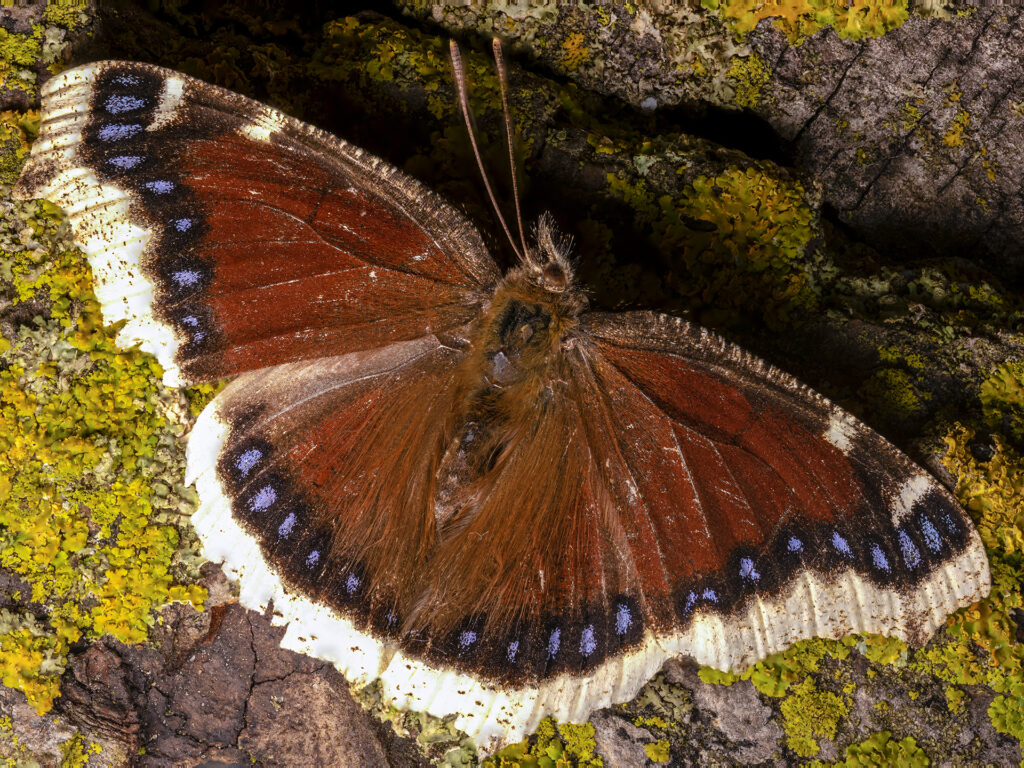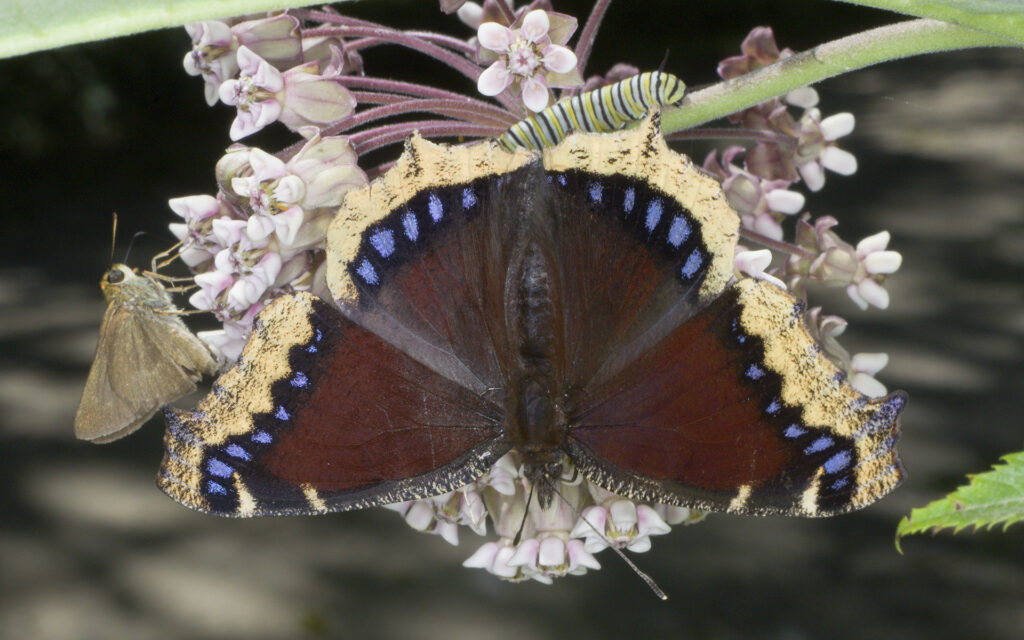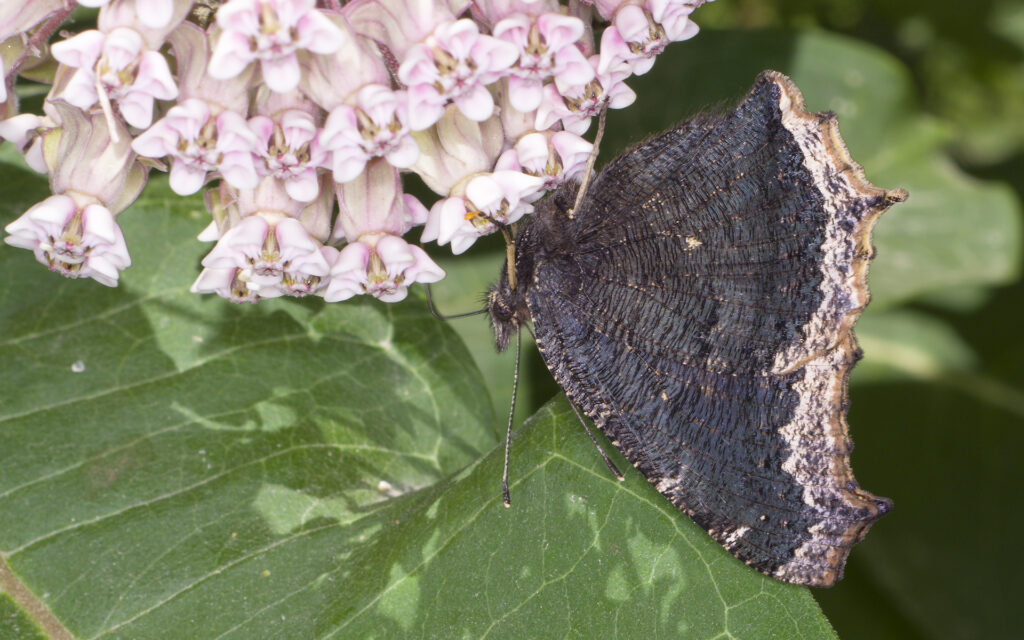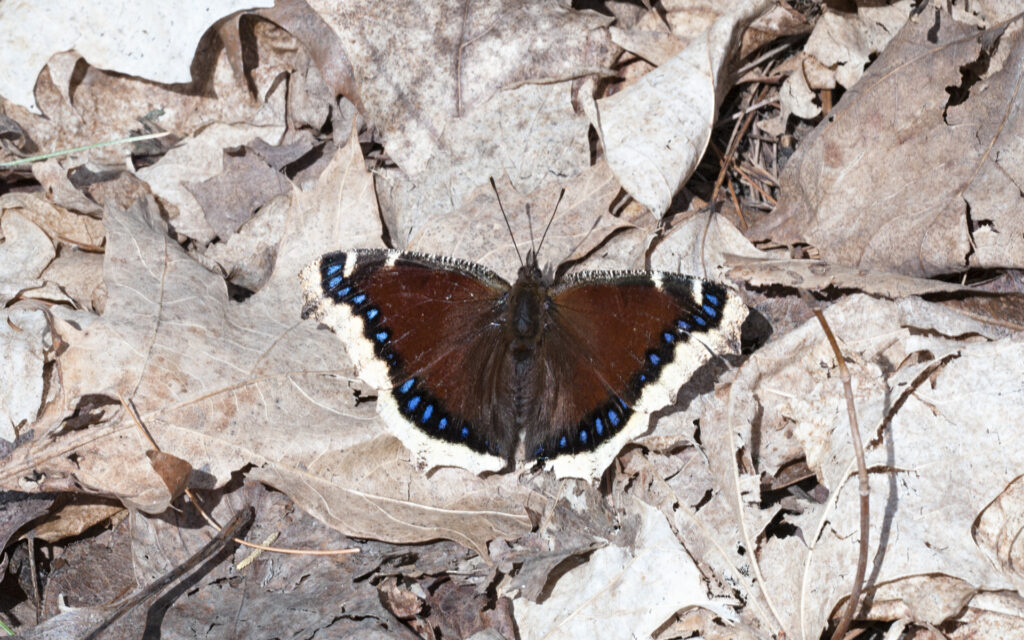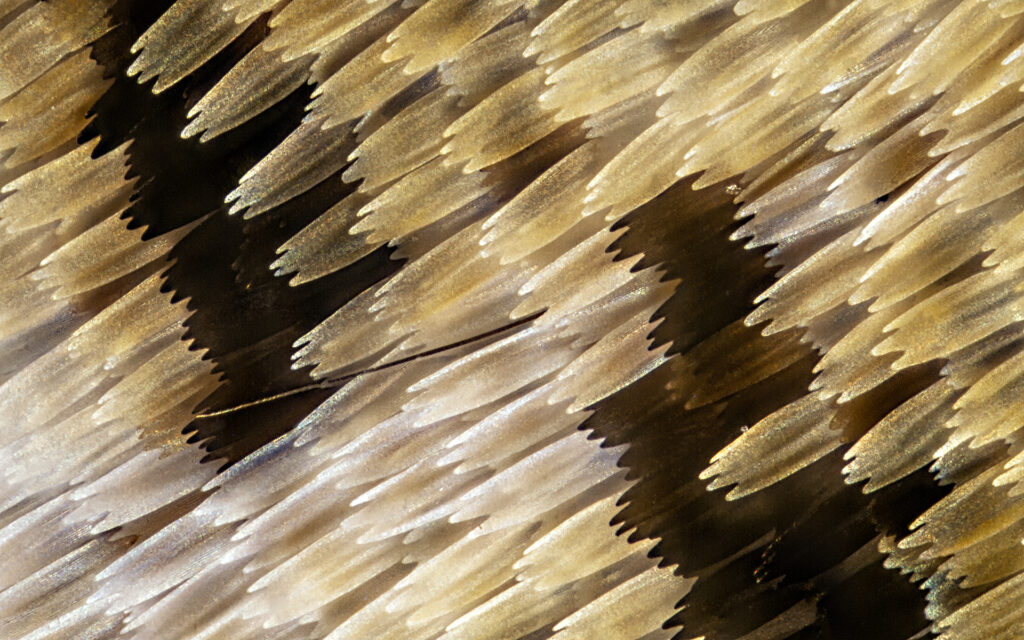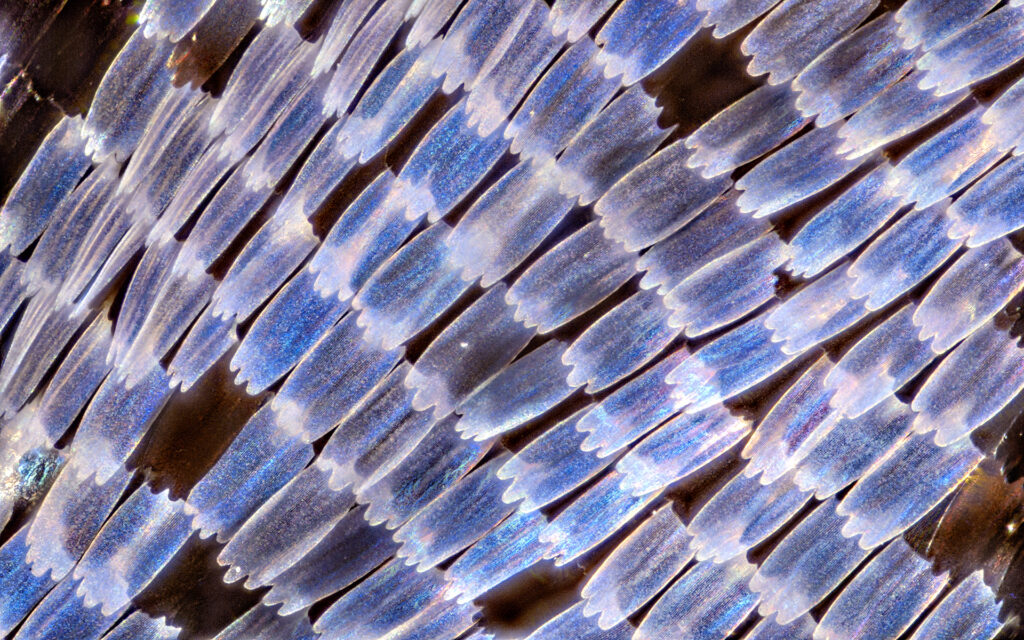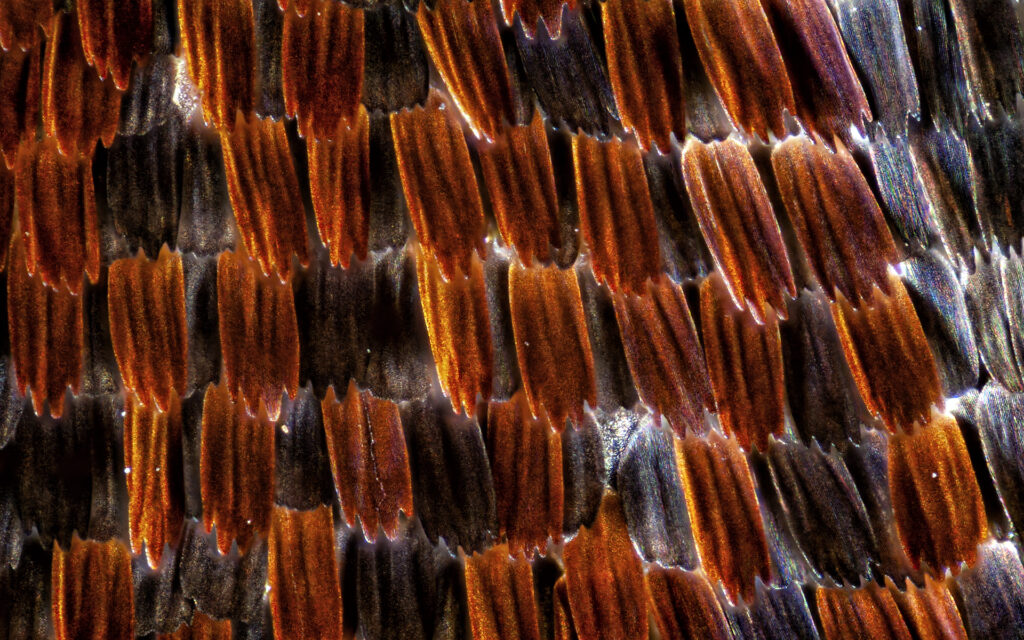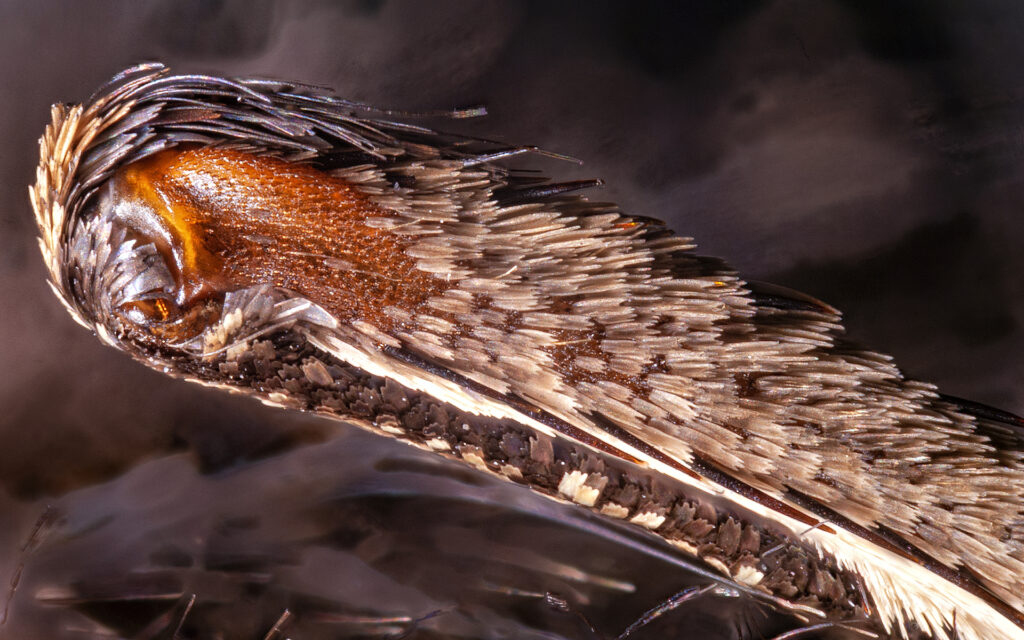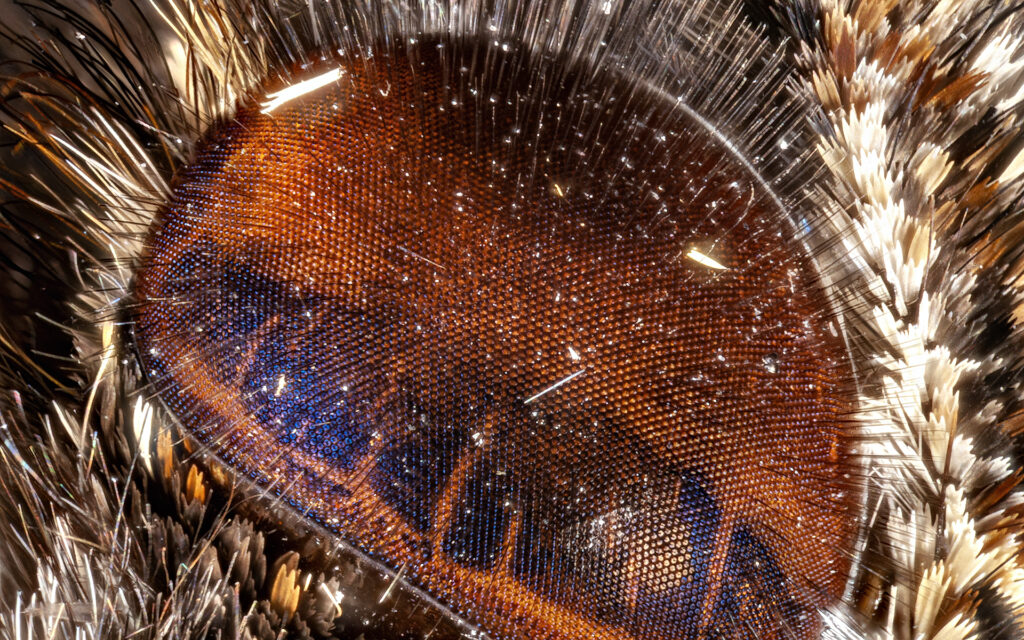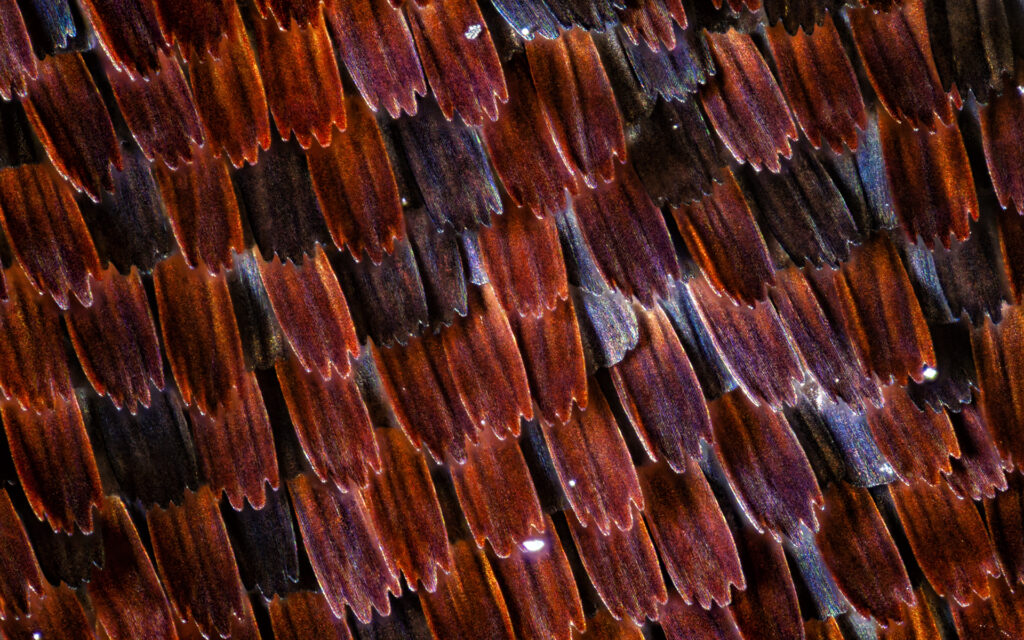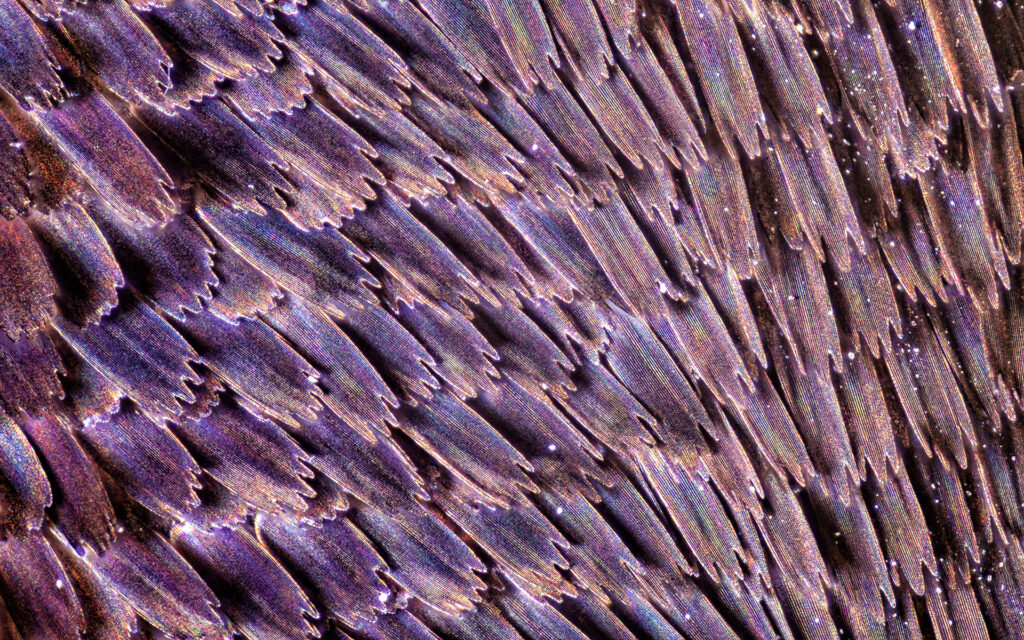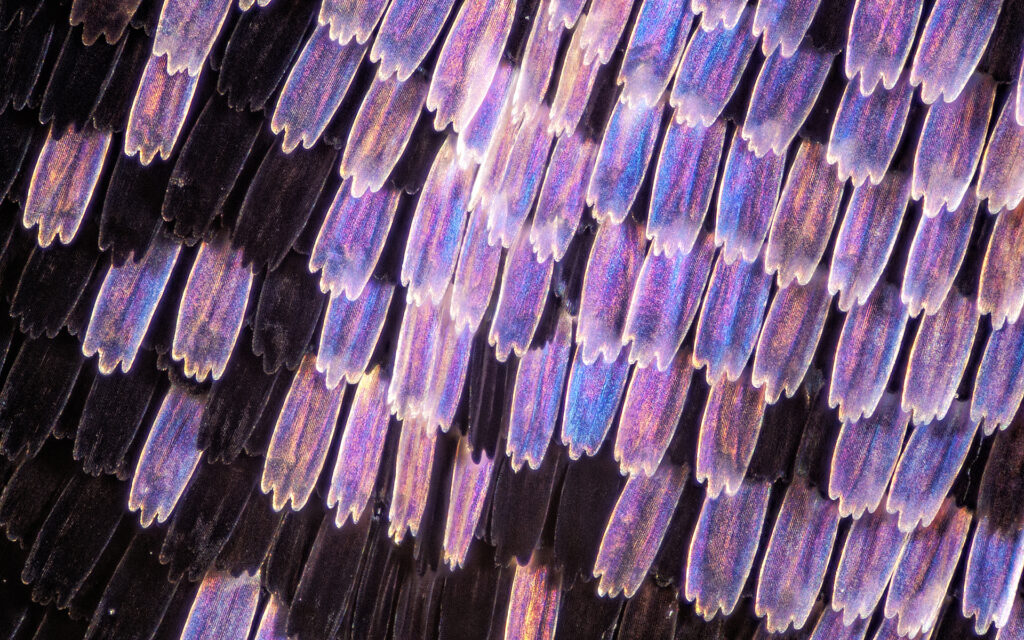The Mourning Cloak butterfly (Nymphalis antiopa) is one of my all time favourites. They’re so beautiful. I’ve always enjoyed rich earth tones, and their highlights of cream and iridescent blue are striking in a subtle way. They’re one of our first floating visitors in spring, and seldom found amid the busy meadow flowers shared by other species. They prefer the woods, and the shade, where they effectively blend in with the leaf litter as a defense mechanism by closing their wings. From a distance of more than a couple of feet it’s very easy to mistake the undersides of their wings for dead leaves, when that’s what they’re sitting on.
While shy and easily spooked, if you find one resting, slowly fanning its wings, you may be able to approach for a better look. It’s best to flank them as much as possible. I think it’s also best to move deliberately, rather than tentatively. When moving or leaning in for a shot I’ve had better luck when I avoid pausing but move slowly enough they don’t react, but it’s always a gamble and the butterflies usually win. It sure is fun trying provided there are butterflies around to see. This year is the worst I’ve ever seen for local insects.
There is one spot along one of my routine hiking paths, along a rural highway where I find at least a couple of these killed on the road, every year. I’ve seen them courting and mating in that spot, too. The photos below are from one of an ill-fated pair who may have died while still embraced, as I found them just inches from each other. It’s awful what we do with our vehicles, and we don’t even notice it, or care to. I sometimes feel strangely conflicted about using these creatures for my art, but I can’t think of any other ethical way I could locate enough specimens. I guess I’m not fully resolved that it’s ethical for me to benefit from the wholesale slaughter caused by others of my kind. These things take time. I’ve learned the value of patience with myself. I hope anybody who views these photos enjoys them as much as I do.
